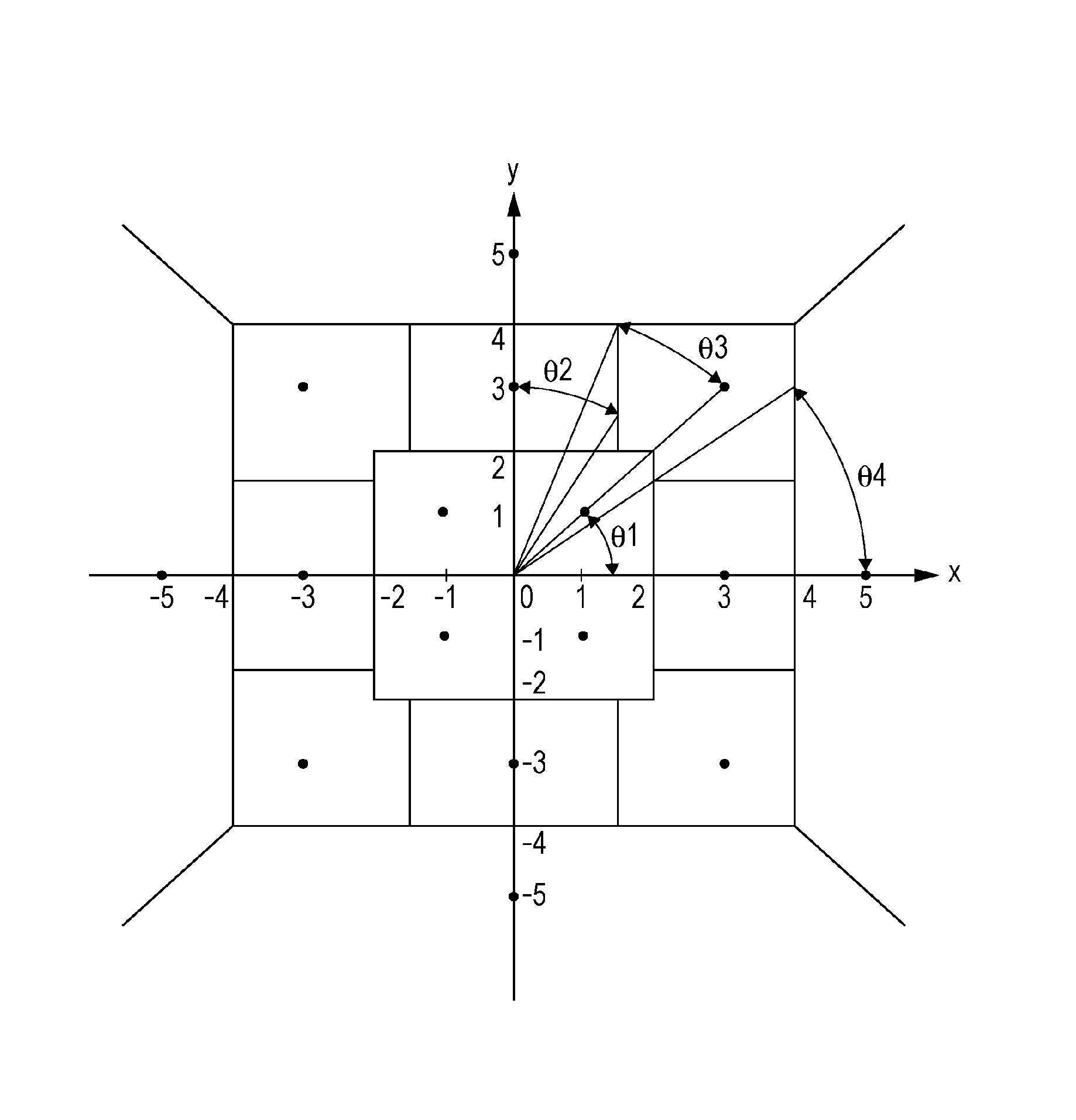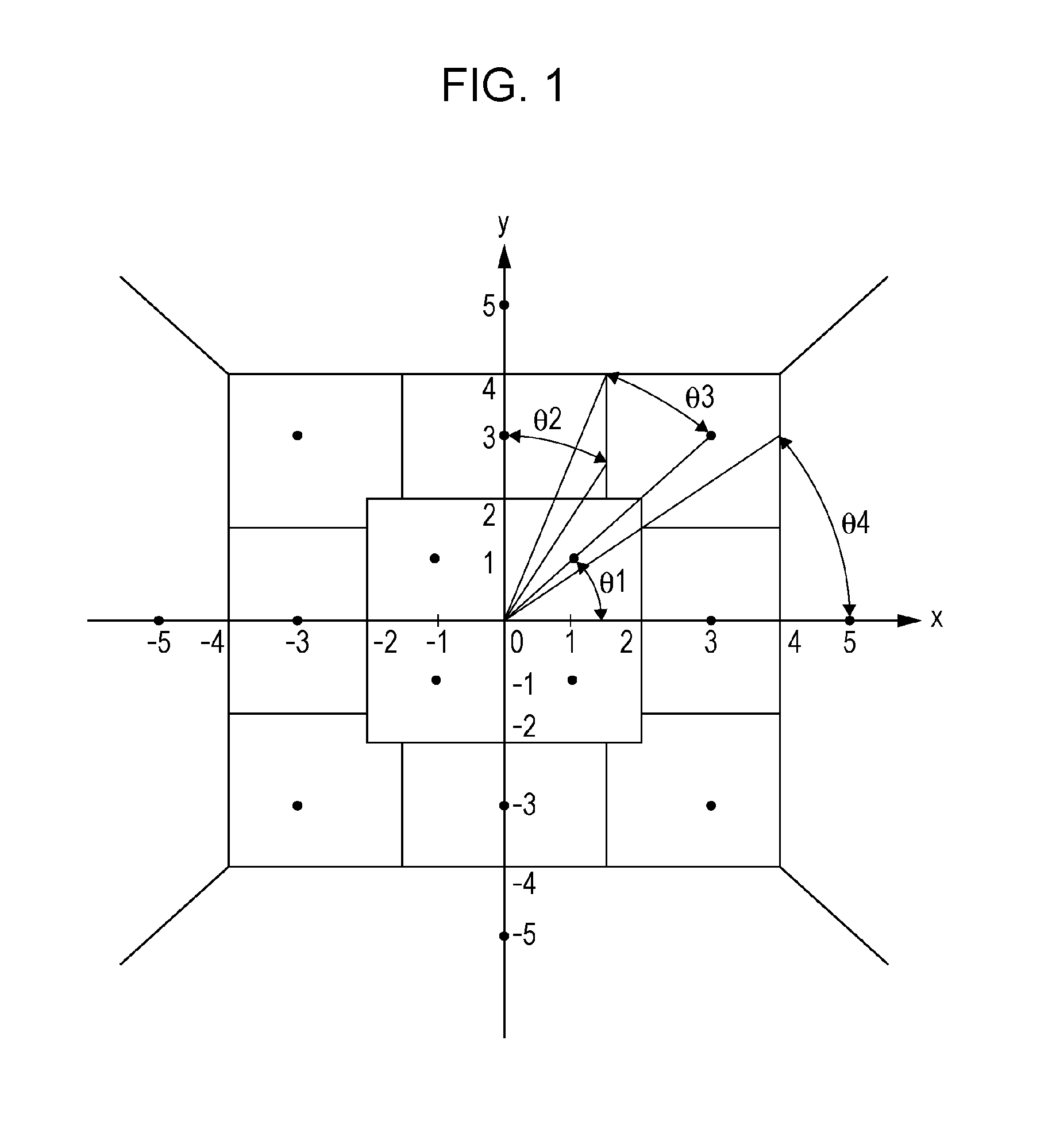Phase rotation correcting method and phase rotation correcting apparatus
a phase rotation and correcting method technology, applied in electrical devices, digital transmission, multiple carrier systems, etc., can solve the problems of inability to accurately demodulate a received signal, inability to accurately calculate the amount of phase rotation correction that is needed as a result of a fluctuation of transmission path characteristics, etc., to achieve accurate demodulation of a received signal and accurate calculation of the amount of phase rotation correction
- Summary
- Abstract
- Description
- Claims
- Application Information
AI Technical Summary
Benefits of technology
Problems solved by technology
Method used
Image
Examples
embodiment 1
[0034]FIG. 4 is a block diagram illustrating an outline configuration of a wireless receiving apparatus according to Embodiment 1. A wireless receiving apparatus 17 illustrated in FIG. 4 is a wireless receiving apparatus having a single-carrier receiving function and includes a receiving antenna section 1, an RF processing section 2, an ADC (AD converter) section 3, a synchronization detecting section 4, a frequency correcting section 5, an S / P (Serial / Parallel) converting section 6, a Fourier transform (DFT (or FFT)) section 7, a transmission path correcting section 8, a phase error correcting section 9, an inverse Fourier transform (IDFT (or IFFT)) section 10, a P / S (Parallel / Serial) converting section 11, a phase rotation correcting section 12, an adding section 13, a phase rotation amount calculating section 14, and a demodulating section 15. Note that the phase rotation correcting section 12 and the phase rotation amount calculating section 14 constitute a phase rotation correc...
embodiment 2
[0049]FIG. 13 is a block diagram illustrating an outline configuration of a phase rotation amount calculating section of a wireless receiving apparatus according to Embodiment 2. Note that the outline configuration of the wireless receiving apparatus according to Embodiment 2 is identical to that of the wireless receiving apparatus 17 of Embodiment 1 described above although some functions of the wireless receiving apparatus according to Embodiment 2 are different from those of the wireless receiving apparatus 17 of Embodiment 1. Therefore, FIG. 4 given the reference numeral “17A” is referred to. Members of a phase rotation amount calculating section 14A illustrated in FIG. 13 that are identical to those of the phase rotation amount calculating section 14 of the wireless receiving apparatus 17 according to Embodiment 1 are given identical reference numerals.
[0050]In FIG. 13, the phase rotation amount calculating section 14A includes members that are similar to the absolute value con...
embodiment 3
[0052]FIG. 15 is a block diagram illustrating an outline configuration of a wireless receiving apparatus according to Embodiment 3. FIG. 15 illustrates, as an example, a configuration of a wireless receiving apparatus that has a single-carrier receiving function. Note that, in FIG. 15, members that are identical to those in FIG. 4 are given identical reference numerals. As illustrated in FIG. 15, a wireless receiving apparatus 17B according to Embodiment 3 includes a receiving antenna section 1, an RF processing section 2, an AD converter section 3, a synchronization detecting section 4, a frequency correcting section 5, an S / P converting section 6, a Fourier transform (DFT (or FFT)) section 7, a transmission path correcting section 8, a phase error correcting section 9, an inverse Fourier transform (IDFT (or IFFT)) section 10, a P / S converting section 11, a phase rotation correcting section 12, a phase rotation amount calculating section 14, a demodulating section 15, and a phase r...
PUM
 Login to View More
Login to View More Abstract
Description
Claims
Application Information
 Login to View More
Login to View More - R&D
- Intellectual Property
- Life Sciences
- Materials
- Tech Scout
- Unparalleled Data Quality
- Higher Quality Content
- 60% Fewer Hallucinations
Browse by: Latest US Patents, China's latest patents, Technical Efficacy Thesaurus, Application Domain, Technology Topic, Popular Technical Reports.
© 2025 PatSnap. All rights reserved.Legal|Privacy policy|Modern Slavery Act Transparency Statement|Sitemap|About US| Contact US: help@patsnap.com



